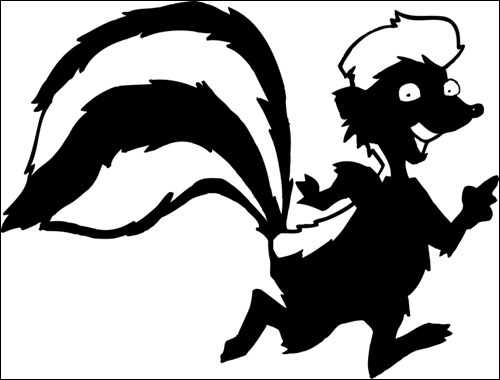Councillors at City Hall on Monday were reminded North Battleford attracts many visitors to the community.
But not all of them are human, and they aren’t dogs or cats, either.
Skunks and raccoons have been a common issue in the city limits, but bigger animals such as coyotes and deer have also been known to show up occasionally.
These animals are known to venture onto city streets and even into backyards in neighbourhoods. Moreover, the fall is typically the time of year when more wild animal sightings happen in general in the province.
At council Monday, Communications Co-ordination Susanne Abe spoke about a pamphlet being released by the City this week with tips on how to prevent wild animals — particularly the “nuisance” animals — from being attracted to urban areas.
The leaflet on “Wildlife in North Battleford” can be found on the City’s website in the Residents section, under “Pets” and “Emergency Services.”
They note wild animals are attracted to residential areas at this time of year, as they seek shelter and food for the coming cold.
The pamphlet explains how homeowners can actively prevent wildlife encounters and suggests the following: removing junk, branches and grass clippings from yards, closing in spaces underneath decks, patios and storage sheds, keeping garbage bins closed, making sure pets are fed inside the house and making sure pet food and bird feed is not kept outside and proper composting.
As for how to act if wildlife winds up in the city limits, the City urges people to stay calm and back off slowly, but not to run, and to warn others and report the sighting immediately to the Ministry of Environment’s TIP Line (800-667-7561). Wild animals should never be approached, fed, touched or photographed.
The topic of wildlife was discussed extensively Monday. Much of the attention focused on skunks and raccoons, and particularly on who would be responsible for dealing with these animals.
It was confirmed by Fire Chief Albert Headrick that for skunks and wild animals it is conservation officers from the Ministry of Environment who respond to those calls. He also referred to a provincial TIP line available to call about “aggressive wildlife” encounters.
Mayor Ian Hamilton asked about the extent of skunk sightings this year.
Councillor Greg Lightfoot noted that in his neighbourhood there had been a few skunks. He had skunk traps out, he said, but so far none had been caught.
Lightfoot had contacted officials including Special Constable Ross MacAngus from municipal enforcement, as well as the Ministry of Environment, about how to catch the skunks. He said one of the things he was told was the skunk population rises and falls on a seven-year cycle, and this is the sixth year of that cycle.
“They’re thinking this year or next year could be much more robust,” said Lightfoot of the situation.

.png;w=120;h=80;mode=crop)

.png;w=120;h=80;mode=crop)
